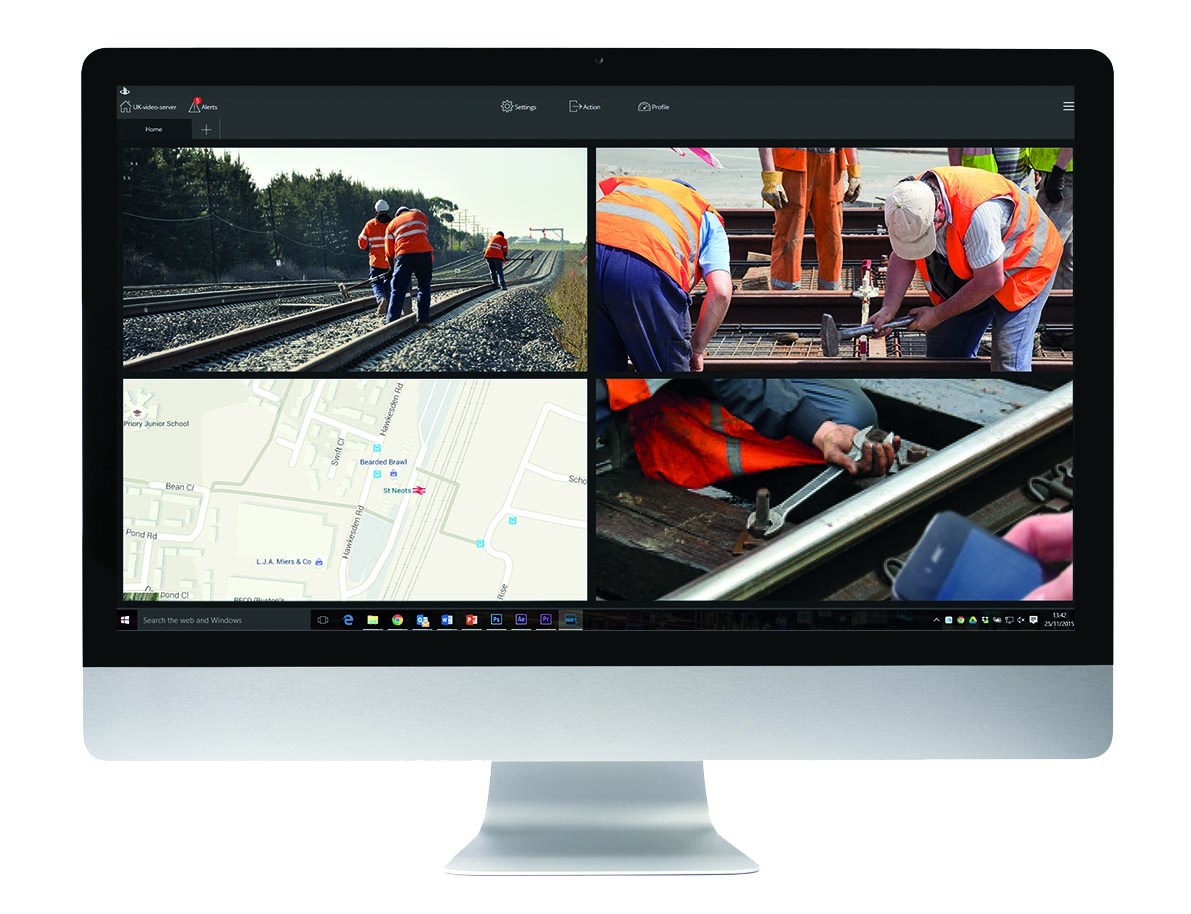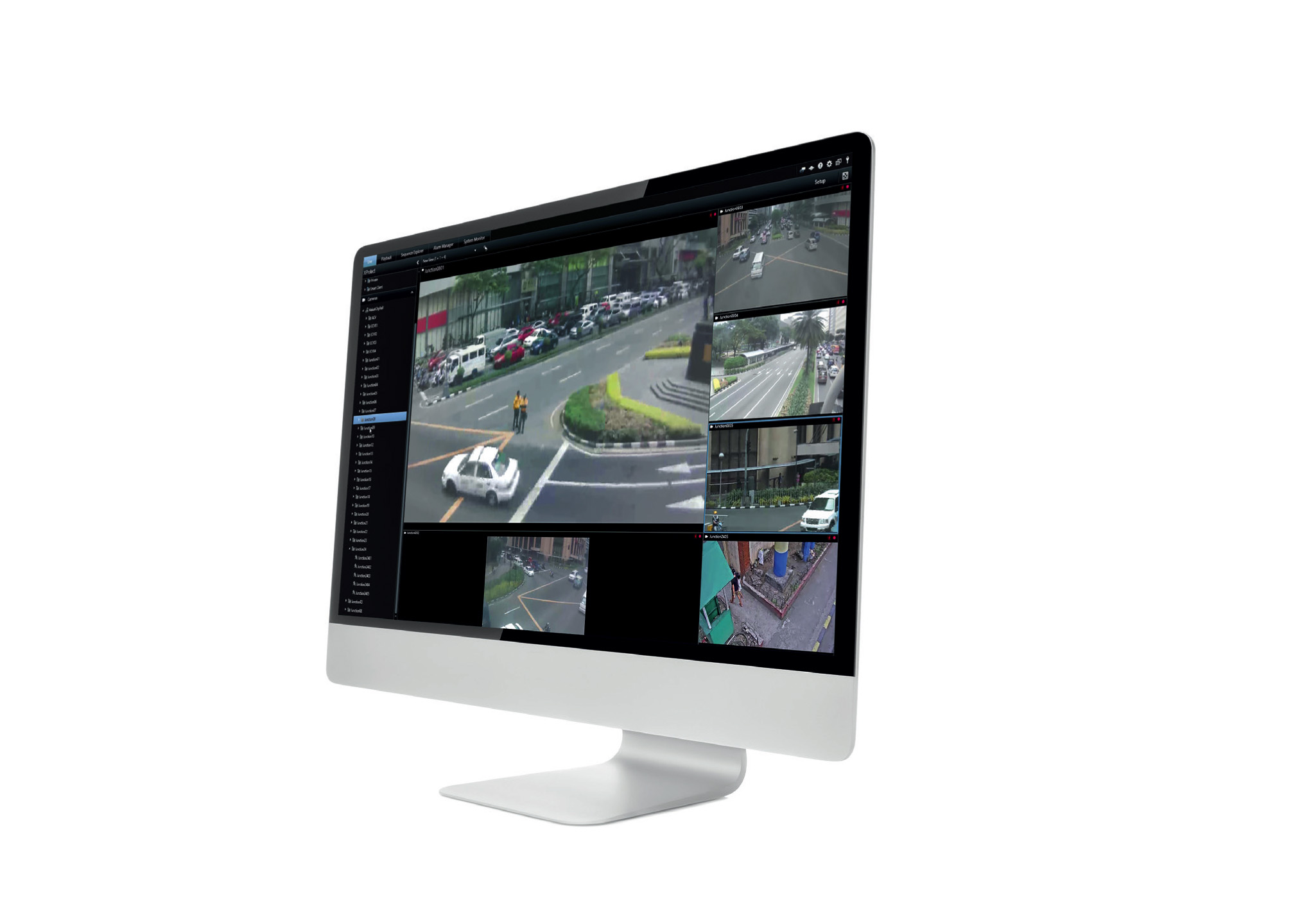
Bandwidth limitations have long been the bottleneck restricting the expanded use of video streaming for ITS, monitoring and surveillance purposes. Recent years have seen this countered to some degree by the introduction of ‘edge processing’ whereby ANPR, incident detection and other image processing is moved into (or close to) the camera, so only information of interest is transmitted to the control room.
Such solutions work well when the system is designed to detect a particular event, incident or type of information but in cases where live (or near live) streaming may be required, even intermittently, adding or upgrading cameras can necessitate upgrading the transmission network. However, UK company
Not only does this enhance the capabilities of static locations such as traffic and surveillance cameras, it also vastly increases the ability to stream live video from mobile cameras such as on trains and buses and even the body-worn cameras often used by enforcement officers.
According to Marie Clutterbuck, senior director at Digital Barriers, the system works out the best way to send streamed material from point A to point B using the lowest amount of bandwidth which not only reduces buffering but also cost. This could be via the cellular network, Wi-Fi VPN or anything else available.
“The advantage is that transport operators’ control rooms can now remotely monitor in real time the video from trains and other vehicles allowing them to assess and assist in any incident that may occur when the vehicle is in service. Traditionally, this footage has only been held on the train or the bus, meaning it can only be reviewed after an incident has occurred. Now it can be monitored in real time,” says Clutterbuck. “With EdgeVis Live, if the control room staff receive an emergency call they can use the real-time streaming to see what is happening.”
Not only does this help the control room staff take appropriate actions, it also means the first responders can be given a better understanding of the situation they will be facing when they arrive on scene. Another facet being worked on by the company is live streaming from body-worn cameras such as those often used by enforcement officers and lone workers which will then also be viewable in a control room. According to Clutterbuck, these systems are creating much interest with the police and other enforcement agencies.
“Recent statistics are showing that increasingly criminals know that body-worn cameras only record to SD cards, so this is encouraging offenders to attack the wearer in order to remove the camera and destroy the evidence it has recorded,” she says. “When the video is streamed live, it not only removes the incentive for criminals to attack the wearer as the evidence is simultaneously recorded elsewhere, it also restores that disincentive to continue with any criminal or aggressive activity.”
As mobile cameras inevitably encounter a patchwork of coverage, EdgeVis is able to provide viewable video over networks at data rates as low as 9kb/s. For this to happen the HD video is initially compressed using a normal encoder as the system simultaneously evaluates network availability and bandwidth capacity. The options evaluated include mobile networks, Wi-Fi (including hotspots and VPNs of transport operators running set routes) and even radio and having determined the available bandwidth, the system then uses neuro networking to reduce the video stream to fit.
Clutterbuck explains: “When you look at a frame of video there is a lot going on, so the software works out what is the most important part of that frame to transmit. So instead of transmitting in fine detail, say the leaves on the trees on a street scene, it will work out that the more important part is a guy with a baton chasing another down the road. Having determined the most important part of the image, it then evaluates how much information is needed for the human brain to understand and interpret what is happening – and only that information is transmitted.”
In comparison with H264, she says EdgeVis transmitted videos do not drop out or freeze when the scene is fast-changing such as, for instance, in a close-up video of an explosion. If necessary, the system will automatically and seamlessly ‘hand over’ from GPRS to 3G to 2G, to radio and even satellite during the transmission.
This means the compressed version can be made instantly available to control room staff and first responders, and those viewing can retrieve a full resolution version of a selected frame (to identify a face or number plate) without interrupting the live streaming. The same system can also transmit pre-shot footage, showing the scene immediately before the incident occurred, again without interrupting the live coverage.
After the event, full quality video is usually available from the local storage – either in the device or nearby - if needed for evidence.
There is no getting away from the fact that if there is no signal (for instance in a tunnel) then there is no means of transmitting the video. However, in most countries the majority of the populated land mass and transport corridors have coverage from one network or another and transmission via satellite can be used to fill the gaps.
“If there is some kind of signal then the system will find a way to transmit the video,” says Clutterbuck, adding that because it seeks out all connection options, its coverage is significantly better than any single telephone network. And as most transport operators and enforcement officers work in defined areas or corridors, they could survey and assess the available coverage and compensate for any black spots.
From a technical perspective, EdgeVis is a plug-in addition for existing surveillance systems that provides a ‘near to zero’ latency (described by Clutterbuck as “a few milliseconds”) and there have been instances where it has reduced bandwidth requirements to a level low enough to stream usable video over ad-hoc wireless (Mesh) networks. Included in the transmission are GPS coordinates, to pinpoint the location where help may be required, and sound can also be included although microphones are not that common and are often sacrificed for video quality due to bandwidth or cost limitations.
Currently, most use cases cover emergencies with transmission triggered by pressing a ‘panic button’. However, Clutterbuck says the system can be used to wirelessly deploy static surveillance cameras or added to existing static monitoring networks (with IP or analogue cameras) in order to reduce the bandwidth requirements by up to 60% while retaining live streaming. In this way, she says EdgeVis can reduce installation costs, delay or eliminate network upgrading costs and reduce ongoing data transmission charges.
This opens up the possibility that more authorities could cost-effectively realise the benefits of live streamed video in static and mobile applications.











